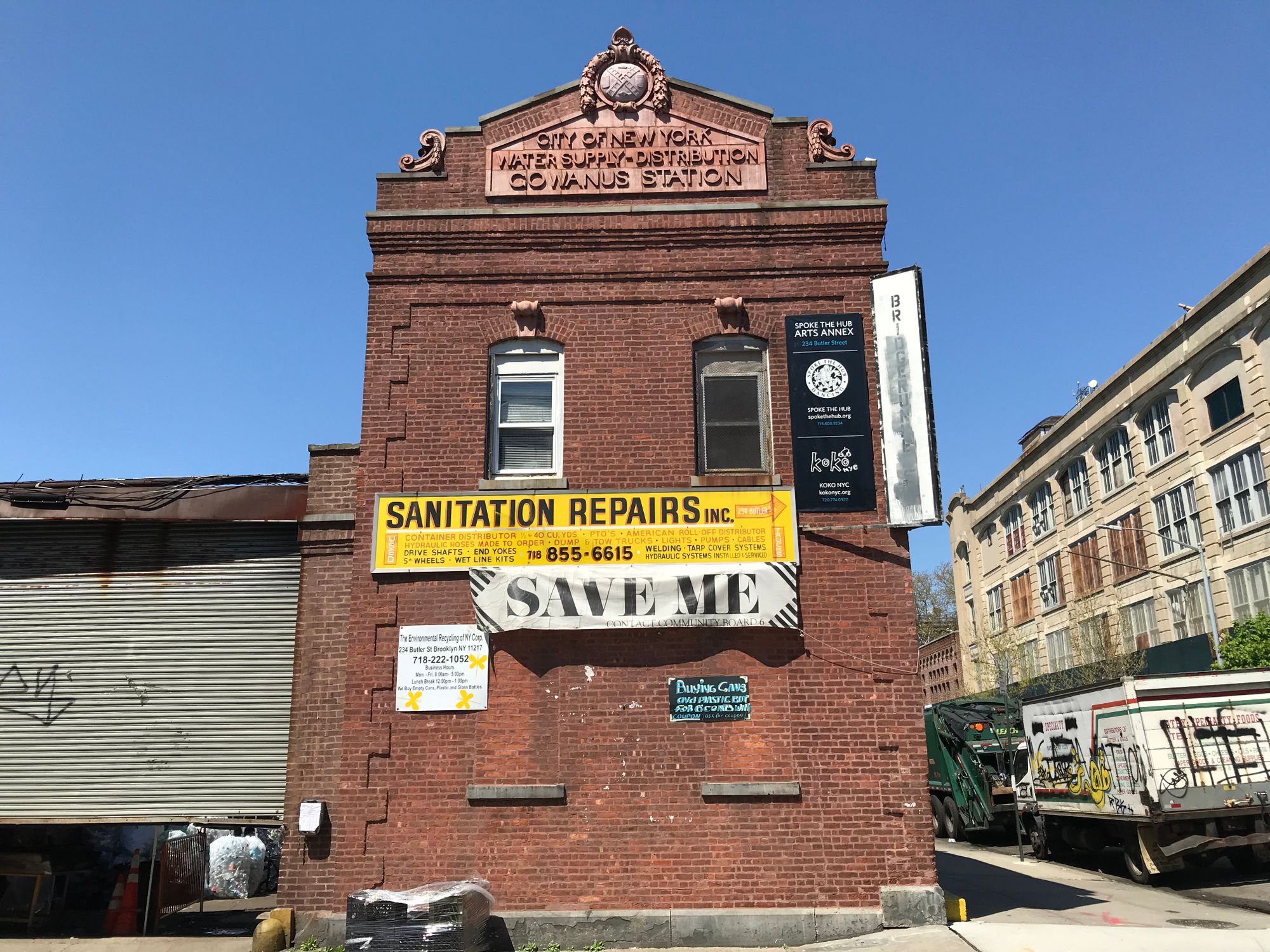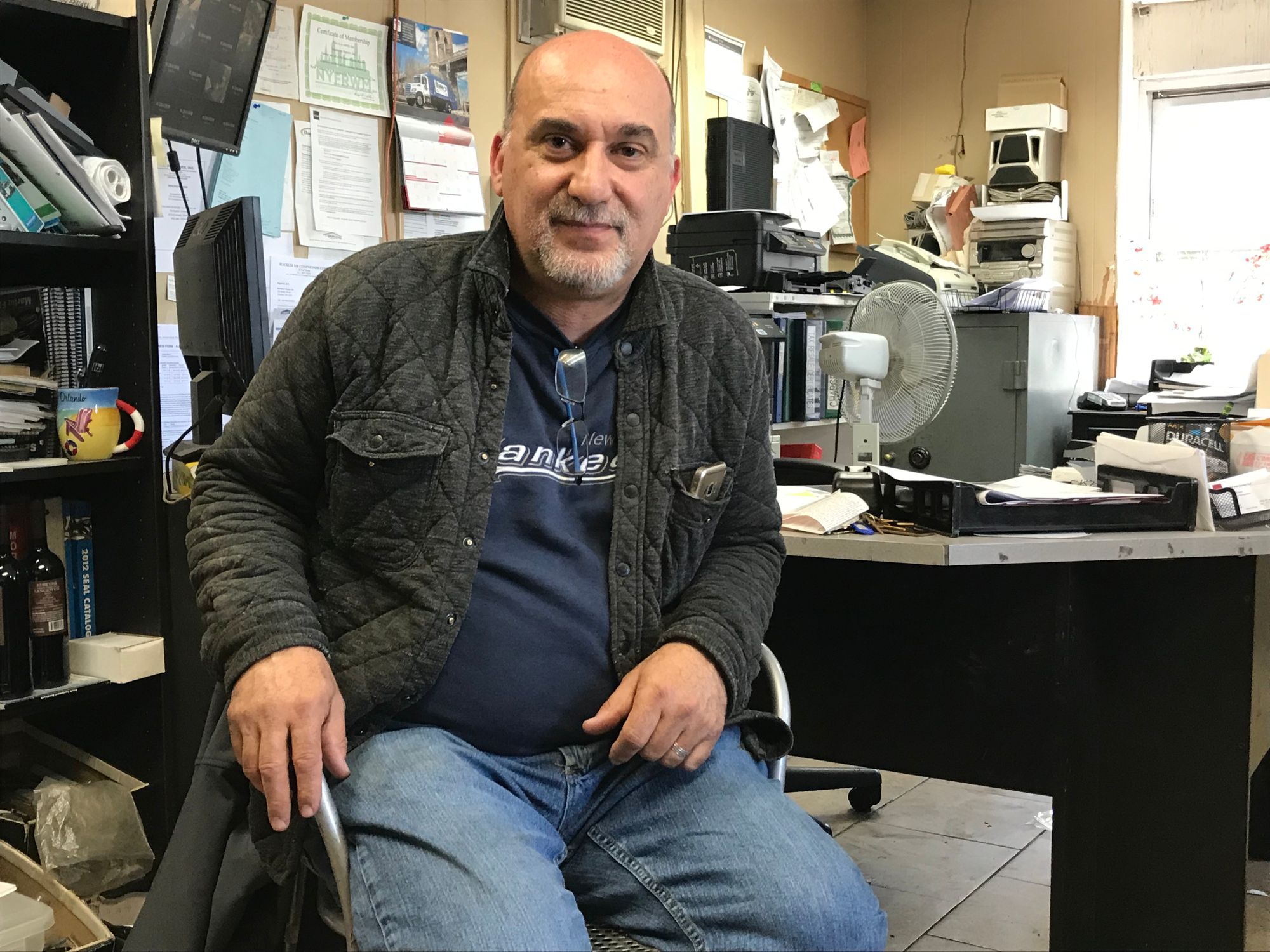Sanitation Repairs Leaving Gowanus Station Building After 46 Years

UPDATED: Wednesday, May 8, 2019 at 9:15am: The NYC Department of Environmental Protection (DEP) confirmed that the city acquired the properties October 31, 2018. While a final sale price has not been determined, an advance payment of $36 million “was made to the owner of 234 Butler Street” in March, according to a spokesperson for the agency.
Cornerstone Relocation Group has shown properties to tenants affected by the acquisitions of the three properties, he said. “A few tenants have either already moved or plan to relocate in the coming months. We are still offering assistance to the remaining tenants,” he added.
GOWANUS – Last April, dozens of locals held a candlelight vigil to protest the city’s planned demolition of the historic Gowanus Station building at 234 Butler Street.

The building’s former owner, Salvatore Tagliavia, recently spoke to Bklyner, noting that in the year since the vigil, “more questions have risen” than have been answered. His business, Sanitation Repairs, has been headquartered in the building for 46 years.
The Gowanus Station site has long been a key part of the EPA’s plans to clean the Gowanus Canal Superfund site. One plan to clean the polluted waterway includes demolishing Gowanus Station, as well as two neighboring properties at 242 and 270 Nevins Street, and placing an eight million gallon Combined Sewage Overflow (CSO) tank facility in their place. An auto repair business leases the space at 242 and a film/tv company, Eastern Effects, leases the building at 270. “I’m the only one who is technically an owner and a tenant,” Tagliavia said of the three affected sites.
Tagliavia’s father, Andy, founded Sanitation Repairs in Coney Island in 1970, repairing sanitation equipment including trucks and hydraulic systems. The growing business moved to the Gowanus Station building three years later. Initially renting the space, Tagliavia’s father purchased the brick Beaux-Arts building in 1978.
Tagliavia began working for the company in 1985, when Gowanus was very different. “Prostitutes, needles, drugs all over the ground, stolen cars parked outside,” is how he remembers the area. “It was a scary neighborhood to walk through.” He took over the family business when his father retired in 2005.
The Environmental Protection Agency (EPA) nominated the Gowanus Canal as a Superfund site in 2009. “EPA contacted us back before the project began,” Tagliavia recalled. “They told us that they would be dredging out the canal and putting a CSO tank, but they felt that they were going to put it in Double D park [Thomas Greene Park located across from the three properties]. Then they started negotiating with the city and the city told them they did not want to put that in the park, they wanted to put the tank here.”
In October 2018, the NYC Department of Environmental Protection (DEP) presented updated plans for the CSO tank facility, which include an underground tank topped by a head house and an adjacent 1.6-acre park. Also in October, the city took over the three Gowanus properties.
“As of February of last year, nothing was moving forward as far as the city was concerned, and they just decided to take it over via eminent domain,” Tagliavia said. “Eminent domain is only supposed to be [used] when there are no other options involved, and there clearly were other options.” Along with potentially locating the tank at the park, the city announced another alternate plan in November 2018—a tunnel.
“It’s amazing how the tunnel situation came up literally two weeks after they took over the property,” Tagliavia said.
Even if the EPA decides to go with the tunnel solution for the Gowanus Canal, it will not help Tagliavia. “They took over the property, there’s no turning back on it. They took the properties and they’re keeping the properties,” he explained.
Though he would not disclose how much the city paid him for 234 Butler, Tagliavia said, “It wasn’t fair. Especially now with the talk of the rezoning laws and being able to put 22-story buildings on here…. I don’t feel it was a fair deal.”
Fair deal or not, Tagliavia notes that although the city seized his property on October 31st, as of April 23rd he still had not received a cent. “They tell us the check is in the mail.”
“We have notice that we have to vacate the premises by June 30th but they haven’t given us any funds to relocate,” he added. Tagliavia’s two tenants at 234 Butler, Spoke the Hub and a bottle/can redemption business, also need to move out by the end of June.
Tagliavia has looked at various spaces, but without payment from the city, he does not have the resources for a down payment or for renovations. Bklyner reached out to DEP on April 22nd with inquiries regarding the city’s purchase of the three properties but did not receive a response prior to publishing.
“I have a whole folder of places that I’ve looked at but I can’t pull the trigger,” Tagliavia said. “I’ve looked at places in East New York and in the Bronx. Those are the only two locations that I think are cost effective for me.”

As for staying in Gowanus, it doesn’t seem to be a viable option for the business owner. “This area is too expensive,” Tagliavia said. “If we owned the property, we would be staying for god knows how long, but just to rent something around here is over $30 a square foot.”
“After 50 years of being in business you think you would be secure,” he added. “I thought I was secure, I owned the building, I could control my costs, I did not have to raise my prices. Now I’m going to become a tenant and I’m going to have to raise my prices because I guarantee you I’m not going to be able to make ends meet.”
Another change Tagliavia will have to make is scaling down. “We have a 50,000-square-foot location [in Gowanus]. We’re going down to about 10,000 square feet.”
Tagliavia noted another advantage of the Gowanus Station building—its location. “A lot of our customers, if something happens to them in Manhattan, they cross the Manhattan Bridge and they’re here within five minutes,” he said. “They finish, they go back over the bridge, and they’re back at work within two hours.”
“This location was ideal, whether we knew it or not when we purchased it,” he continued. “And it’s a great neighborhood. I love this neighborhood.”
“Hopefully I have a strong clientele that’ll follow us to the Bronx or East New York, wherever we decide to go,” Tagliavia said. Whether his ten employees will be able to move with him depends on where he winds up. All of his staff have worked with him for more than ten years—some have been with the company for two or three decades. “I believe they want to move with me provided that traveling is accessible because everyone takes mass transit. As long as mass transit is nearby, then I don’t see a problem,” he said before acknowledging, “It’s going to be a longer commute for them.”
“The city has left me with a bad taste in my mouth,” Tagliavia said of the experience. “This process did not need to happen. The city is spending our money like it was theirs. They really have no concern about the constituents. They just care about coffering their pockets with developers. It’s just a shame.”
For now, Tagliavia is still waiting for his check to come in from the city. “When the payment comes in…that’s when we’re going to start finalizing a place to relocate and hopefully the business won’t suffer.”
When asked if he’ll miss Gowanus, Tagliavia replies quickly. “Absolutely. Brooklyn, I’ve grown up here. I’ve seen this neighborhood change. It’s actually sad that I’m not going to see it develop.”




